Art
Artwork Khrushchev Probably Would Not Have Liked 4
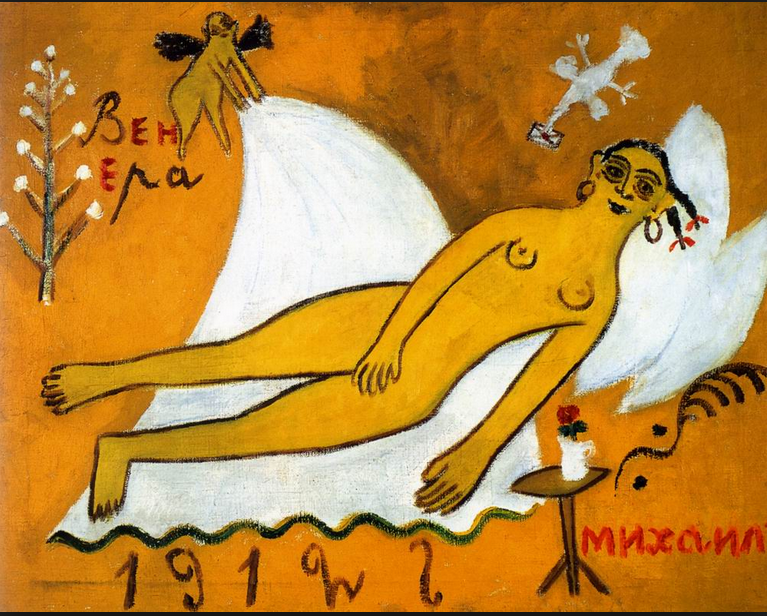
Of course, before the Soviets took a stance against "degenerate" avant-garde art, they had a flourishing avant-garde scene in their own country.
Mikhail Larionov was one such native Russian artist.
Here is his "Venus" from 1912.
This new book on the topic seems very interesting and relevant.
Posted By: Paul - Wed Jun 14, 2017 -
Comments (3)
Category: Art, Avant Garde, 1910s, Russia
The Art of Hayley Newman
Below are some of the captioned images that artist Hayley Newman displayed at her first solo show, "Connotations - Performance Images 1994-98".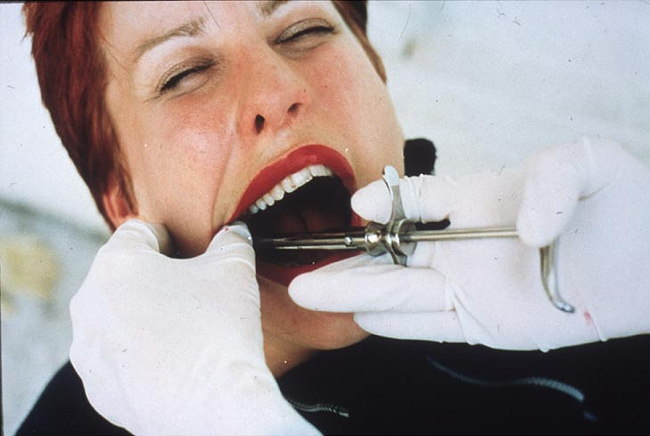
Lock-jaw Lecture Series (1997/1998)
"Over the period of a year I was invited to give a series of lectures on my work. Before each lecture I visited a local dentist and had my mouth anaesthetised. With my mouth made immobile, I gave my feeblest apologies to the students and staff before attempting to talk on my work."
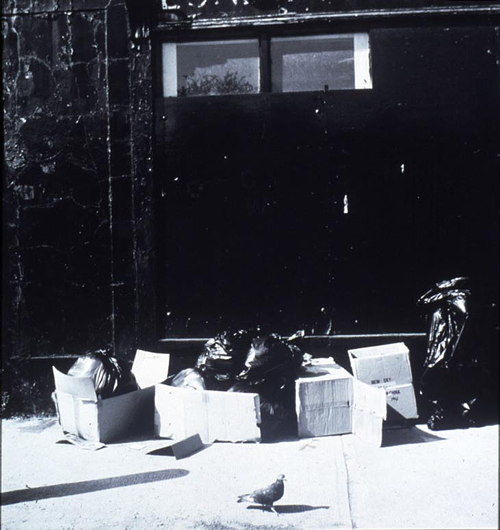
B(in) (1996)
"Sitting in a bin bag waiting for bin men to pick me up in New York. When the bin men arrived at 4pm, I jumped out of the bag and ran home."
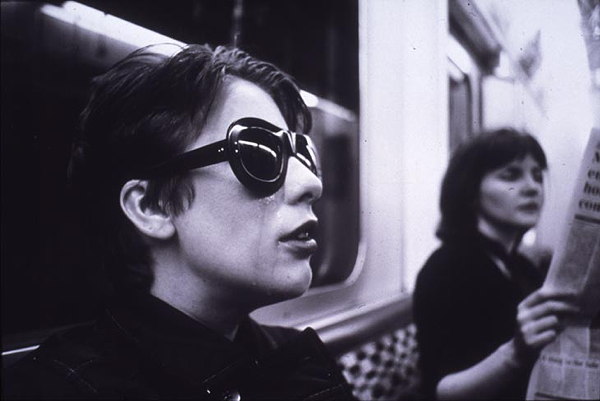
Crying Glasses (An Aid to Melancholia) - (1995)
"Over a year I wore the crying glasses while travelling on public transport in all the cities I visited. The glasses functioned using a pump system which, hidden inside my jacket allowed me to pump water up out of the glasses and produced a trickle of tears down my cheeks. The glasses were conceived as a tool to enable the representation of feelings in public spaces. Over the months of wearing the glasses they became an external mechanism which enabled the manifestation of internal and unidentifiable emotions."
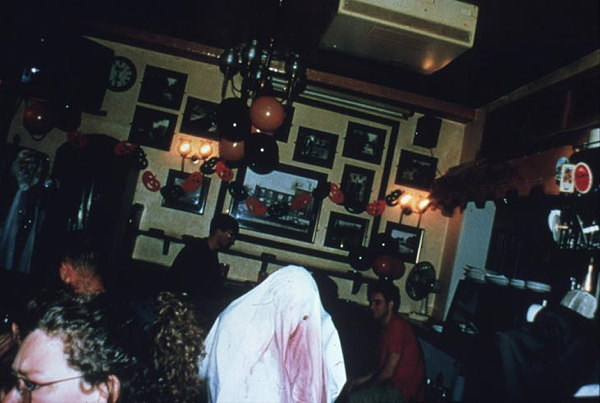
Spirit (1995)
"Soho, London: Dressed as a ghost for Halloween I ran into various pubs in London's Soho, stole a drink and then left."
Here's the punchline, which Newman revealed if you read the fine print in the exhibit guide:
Image sources: Lock-jaw, Crying Glasses, B(in), Spirit
Posted By: Alex - Fri Jun 09, 2017 -
Comments (3)
Category: Art, Photography and Photographers, 1990s
Pineapple Becomes Art
Random object mistaken as art. Over at Robert Gordon University in Scotland, fourth-year student Ruairi Gray claims that he bought a pineapple from the local supermarket and then placed it beside the "Look Again" art and design exhibition at the university.He returned a few days later and discovered that his pineapple had been moved into a glass case. [RGU:Union]


It reminds me of that incident last year in which some teenagers put a pair of glasses on the floor at the San Francisco Museum of Modern Art, and soon a crowd had gathered to look at the "exhibit."

Posted By: Alex - Wed May 03, 2017 -
Comments (3)
Category: Art, Avant Garde
Artwork Khrushchev Probably Would Not Have Liked 3
Continuing our survey of "Early Twentieth-Century Art That Might Have Irked A Soviet Premier, Based On His Explicit Disdain For Such Experimental Creations."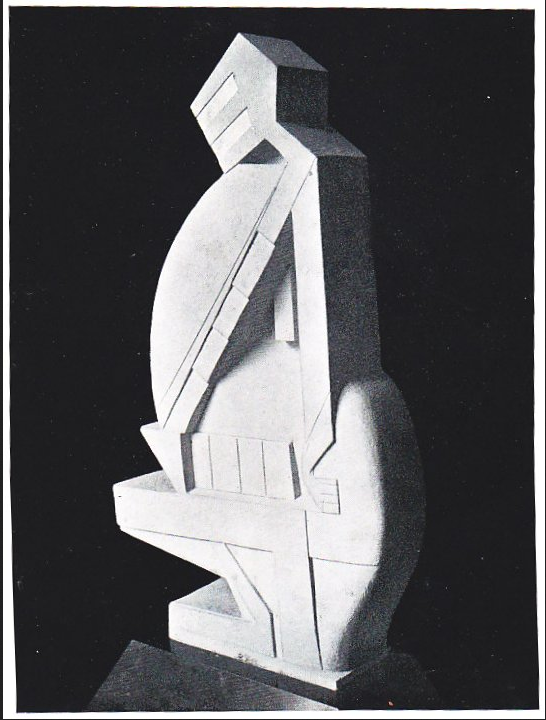
"In the Beginning" by Lawrence Atkinson.
Atkinson's Wikipedia entry.
An essay on Atkinson.
Posted By: Paul - Sat Apr 22, 2017 -
Comments (4)
Category: Art, Avant Garde, 1930s
Shower Hair Art
Lucy Gafford calls herself the Shower Hair Master because she creates art out of shower hair. She then posts photos of her creations on Twitter. She's currently up to "Shower Hair Masterpiece" #418.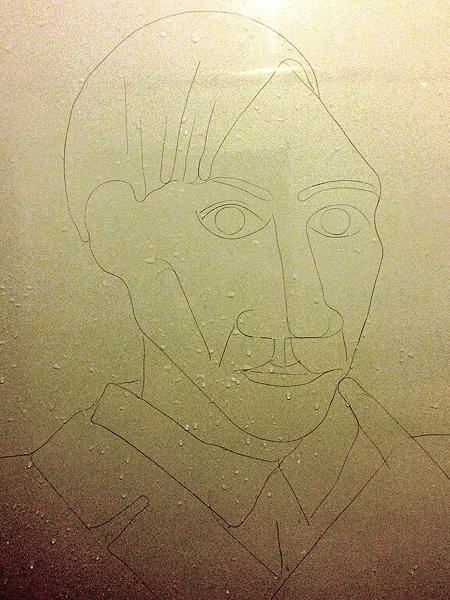
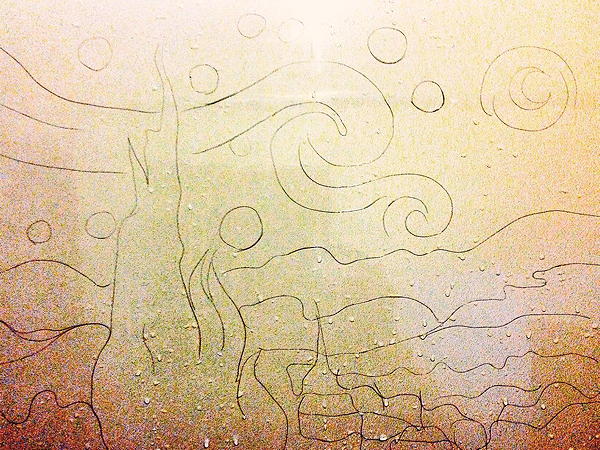
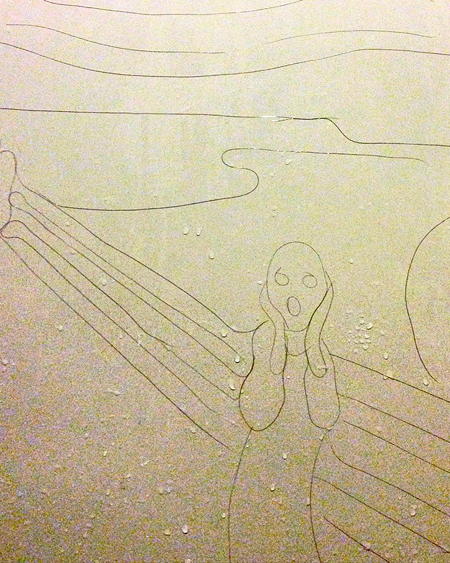
via Hair Hall of Fame
Posted By: Alex - Mon Apr 03, 2017 -
Comments (6)
Category: Art
Ann Hamilton
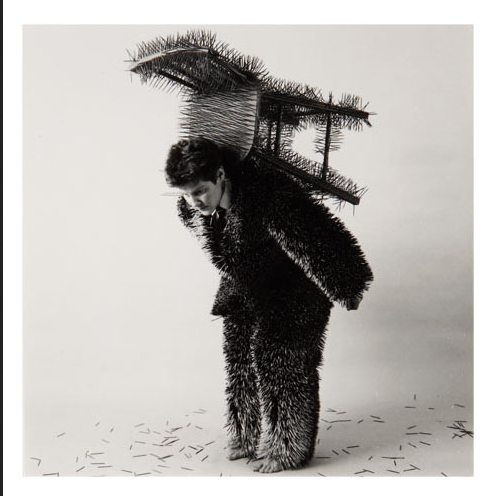
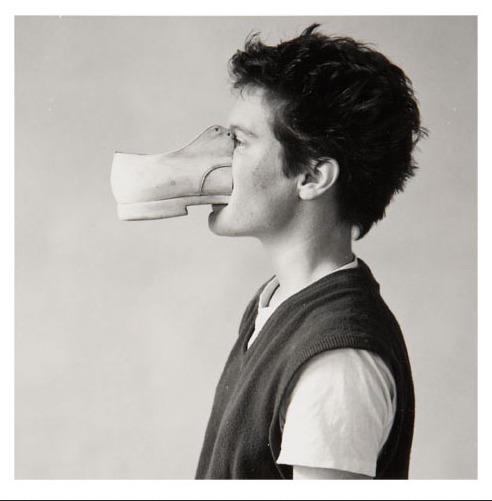
Her home page.
Her Wikipedia page.
Posted By: Paul - Fri Mar 17, 2017 -
Comments (2)
Category: Art, Avant Garde
Risque Produce Labels
There's a collector's market for old produce labels that decorated fruit and vegetable crates, because back in the day these labels were often quite artistic. Some of the labels were also slightly risque, because sex can sell anything, even apples and veggies.Once cardboard boxes were introduced, these kinds of labels fell out of use.
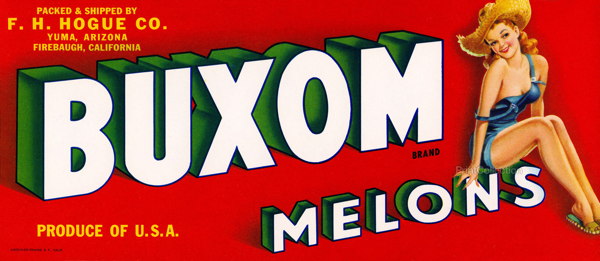
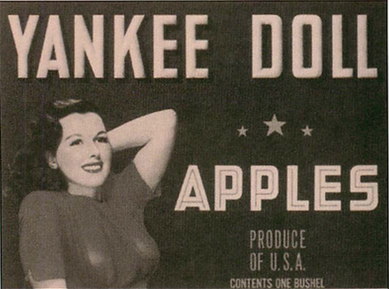
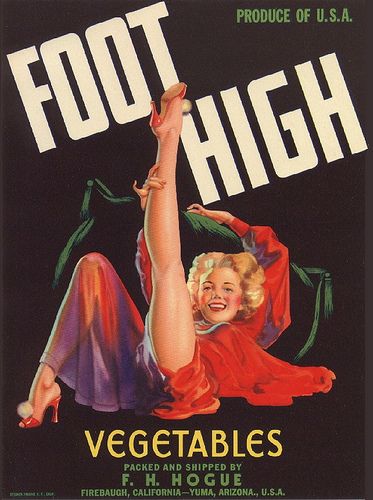
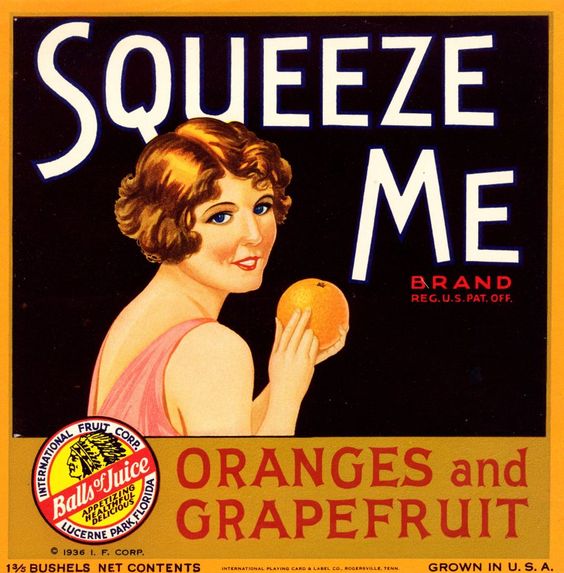
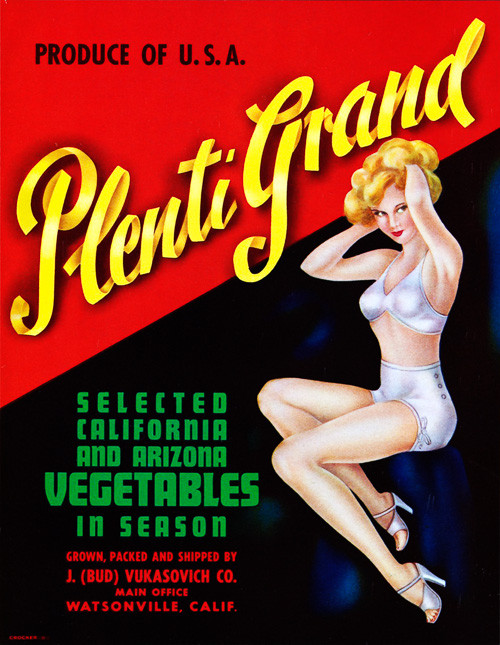
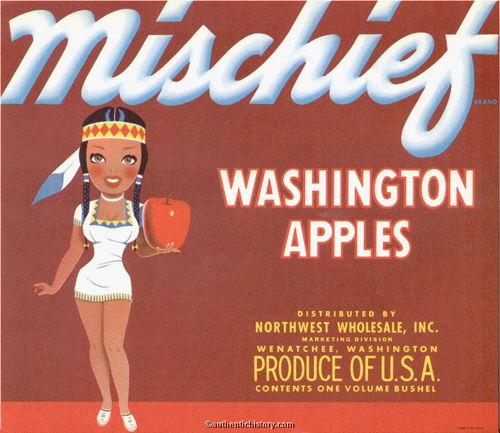
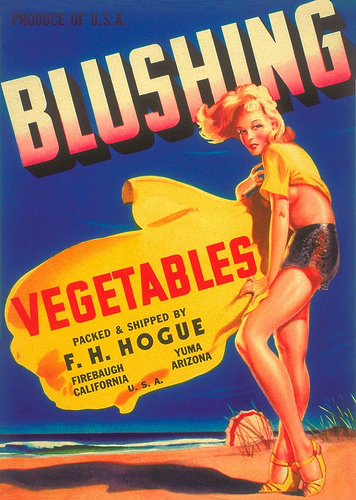
Posted By: Alex - Fri Mar 10, 2017 -
Comments (5)
Category: Art, Advertising
Reciprocal Biomimicry Initiative
The latest from artist Jonathon Keats. He calls it the Reciprocal Biomimicry Initiative. The idea is to use human technologies to give a helping hand to various organisms stressed by environmental change, as a thank you for all the good ideas engineers have borrowed from the natural world over the years.The exhibit is on display at Bucknell University's Samek Art Museum from March 7 to June 4.
More info: Samek Art Museum
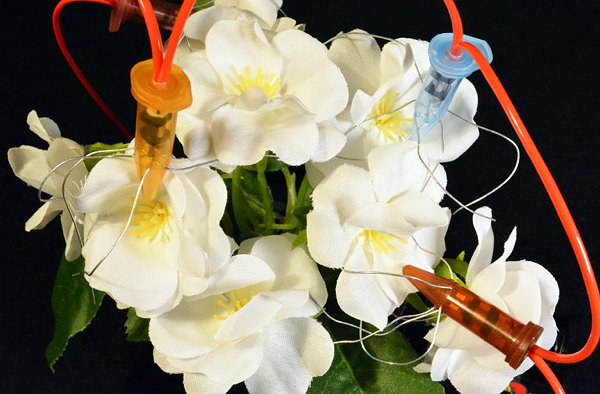
Sex Toys for Flowers: Micro-vibrators provide titillation for flowers that have to be artificially pollinated as honeybee populations are decimated.
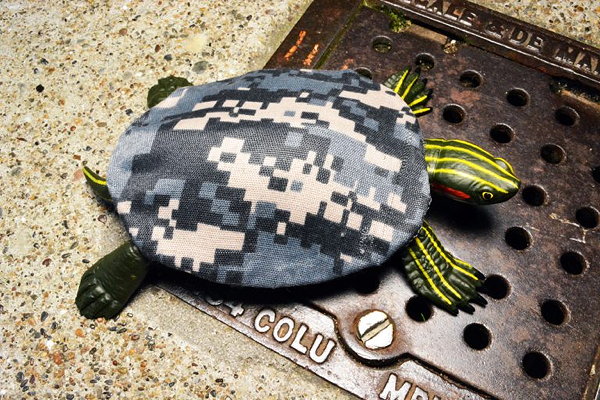
Urban Camouflage for Reptiles: Camouflage designed by the military for urban combat allows reptiles to elude detection in cities as urbanization overtakes their natural habitats.
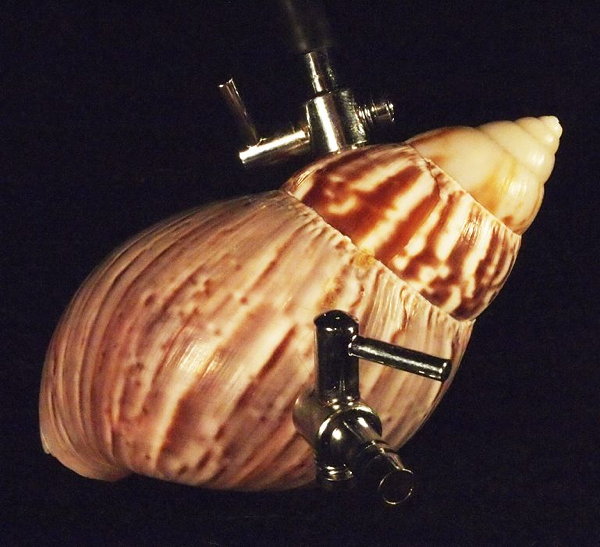
Aqua Lungs for Sea Snails: A life support system allows sea snails to migrate to land when ocean acidification imperils their shells... This conceptual model shows the valves used to maintain the required microenvironment inside the snail’s shell.
Previous WU posts about Keats:
• The Universal Colorblindness Test
• Marriage via quantum entanglement
• Business School for Bacteria
• Century Camera
• Time Management
• The Art of Jonathon Keats
Posted By: Alex - Tue Mar 07, 2017 -
Comments (2)
Category: Art
Gustav Metzger, RIP
Farewell to Gustav Metzger and his "auto-destructive art."Here is the famous "painting" with acid.
Posted By: Paul - Sun Mar 05, 2017 -
Comments (1)
Category: Art, Avant Garde, Twentieth Century
Blinky the Friendly Hen

April 27, 1978: Artist Jeffrey Vallance bought a frozen chicken (a Foster Farms fryer) at a supermarket and then buried it at the Los Angeles Pet Cemetery, following a brief memorial service. He also installed a grave marker for the frozen bird, naming it "Blinky the Friendly Hen." He came to think of Blinky's grave as being like the grave of the Unknown Chicken, representing "all the millions of chickens who are slaughtered and sold as food."
According to kcet.org, "Ten years later, he would have the body exhumed so an autopsy could be performed by UCLA's head of pathology. The tenth anniversary exhibit on the life of Blinky, at the Rosamund Felsen Gallery in Los Angeles, featured a 'shroud of Blinky,' and a recreation of the cemetery's viewing room, with a rubber chicken lying in state. Blinky was later reburied at the cemetery."
It seems that there were also an event to mark the 30th anniversary of Blinky's funeral. The 40th anniversary is coming up next year, so perhaps there'll be another event in Blinky's honor.
Vallance also wrote a book commemmorating Blinky.
More info: Black Acrylic blog
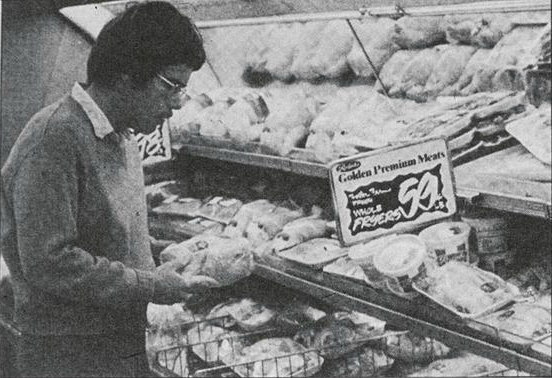


Bridgewater Courier-News - Nov 3, 1983
Posted By: Alex - Fri Mar 03, 2017 -
Comments (2)
Category: Animals, Art, Death, 1970s

| Who We Are |
|---|
| Alex Boese Alex is the creator and curator of the Museum of Hoaxes. He's also the author of various weird, non-fiction, science-themed books such as Elephants on Acid and Psychedelic Apes. Paul Di Filippo Paul has been paid to put weird ideas into fictional form for over thirty years, in his career as a noted science fiction writer. He has recently begun blogging on many curious topics with three fellow writers at The Inferior 4+1. Contact Us |




